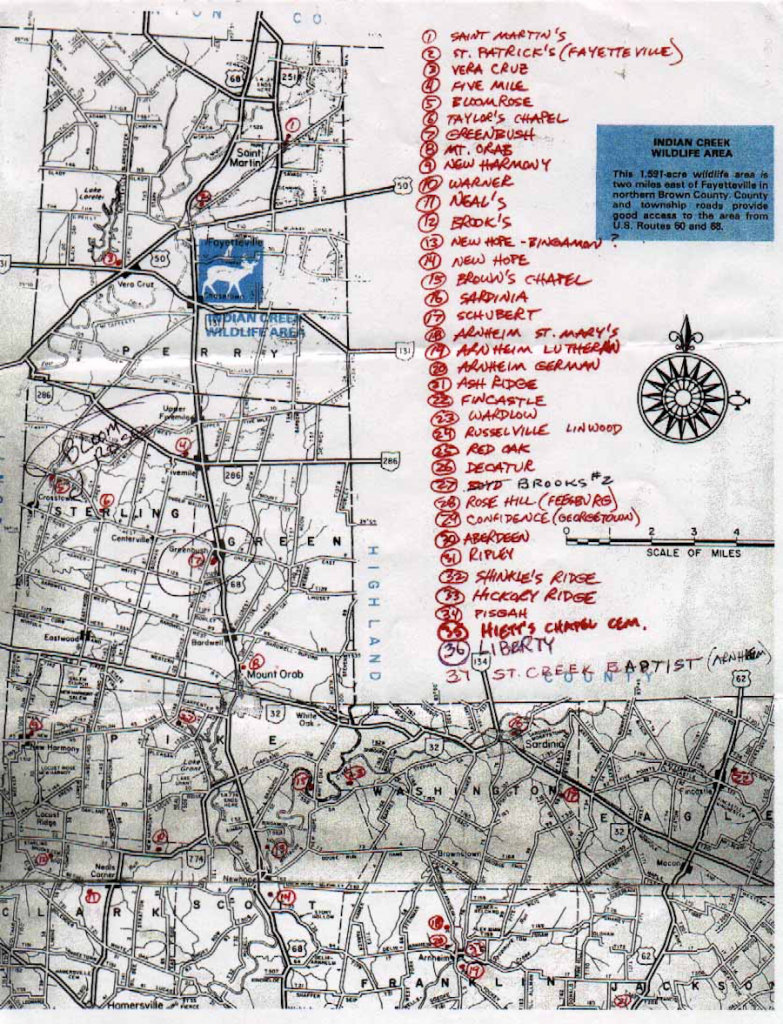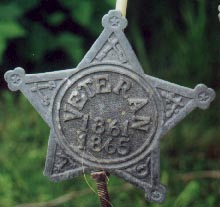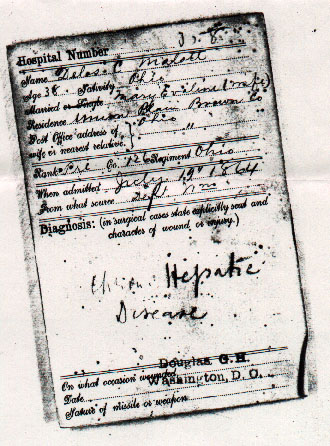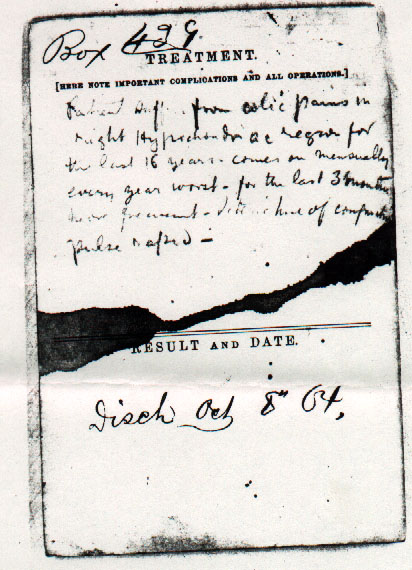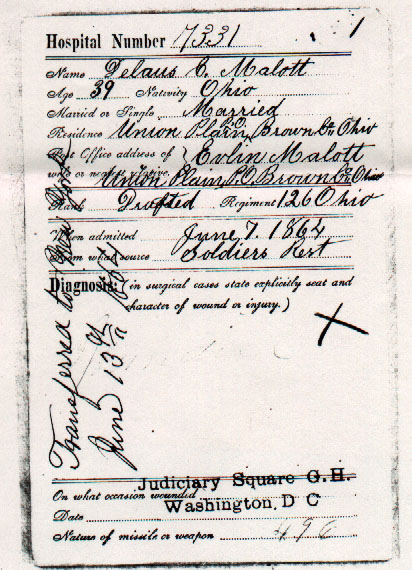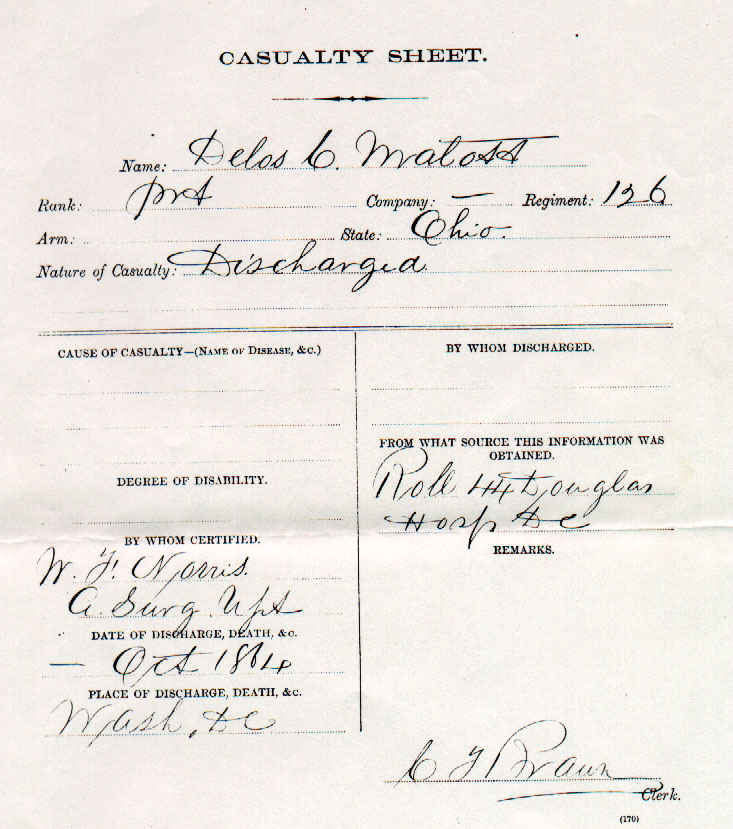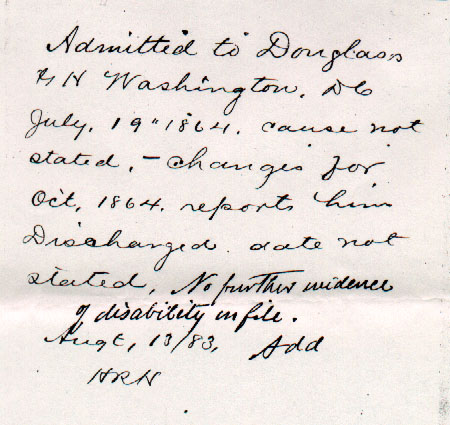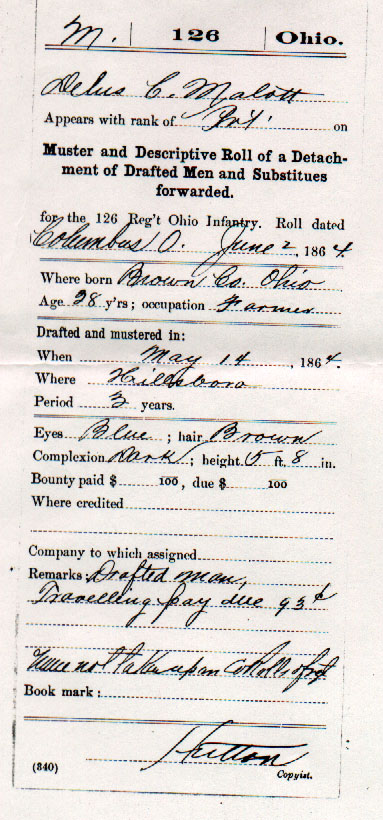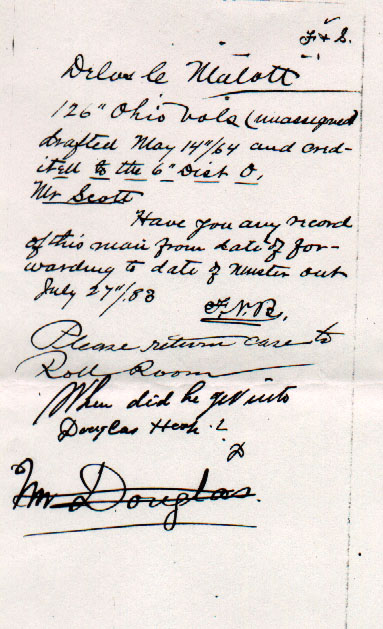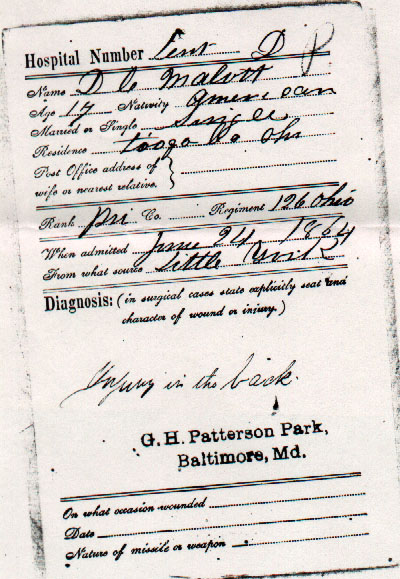A general history of the Huguenots
The Huguenots were French Protestants who were members of the Reformed Church established in France by John Calvin in about 1555, and who, due to religious persecution, were forced to flee France to other countries in the sixteenth and seventeenth centuries.
The Protestant Reformation began by Martin Luther in Germany about 1517, spread rapidly in France, especially among those having grievances against the established order of government. As Protestantism grew and developed in France it generally abandoned the Lutheran form, and took the shape of Calvinism.
The new “Reformed religion” practiced by many members of the French nobility and social middle-class, based on a belief in salvation through individual faith without the need for the intercession of a church hierarchy and on the belief in an individual’s right to interpret scriptures for themselves, placed these French Protestants in direct theological conflict with both the Catholic Church and the King of France in the theocratic system which prevailed at that time.
Followers of this new Protestantism were soon accused of heresy against the Catholic government and the established religion of France, and a General Edict urging extermination of these heretics (Huguenots) was issued in 1536. Nevertheless, Protestantism continued to spread and grow, and about 1555 the first Huguenot church was founded in a home in Paris based upon the teachings of John Calvin.
The number and influence of the French Reformers (Huguenots) continued to increase after this event, leading to an escalation in hostility and conflict between the Catholic Church/State and the Huguenots. Finally, in 1562, some 1200 Huguenots were slain at Vassey, France, thus igniting the French Wars of Religion which would devastate France for the next thirty-five years.
The Edict of Nantes, signed by Henry IV in April 1598, ended the Wars of Religion and allowed the Huguenots some religious freedoms, including free exercise of their religion in 20 specified towns of France.
The Revocation of the Edict of Nantes by Louis XIV in October 1685, began a new persecution of the Huguenots, and hundreds of thousands of Huguenots fled France to other countries. The Promulgation of the Edict of Toleration in November 1787, partially restored the civil and religious rights of Huguenots in France.
Since the Huguenots of France were in large part artisans, craftsmen, and professional people, they were usually well-received in the countries to which they fled for refuge when religious discrimination or overt persecution caused them to leave France. Most of them went initially to Germany, the Netherlands, and England, although some found their way eventually to places as remote as South Africa.
Considerable numbers of Huguenots migrated to British North America, especially to the Carolinas, Virginia, Pennsylvania, and New York. Their character and talents in the arts, sciences, and industry were such that they are generally felt to have been a substantial loss to the French society from which they had been forced to withdraw, and a corresponding gain to the communities and nations into which they settled.
The Huguenot Cross is not only beautiful and symbolic but possesses the added charm afforded by the romance of history and tradition. It recalls a period of valor, constancy, faithfulness, and loyalty to truth. It is becoming more and more a sign among the descendants of the Huguenots throughout the entire world.
It is impossible to state precisely the period in which our Huguenot ancestors adopted the usage of what they called the Sainted Spirit. It certainly existed before the Revocation of the Edict of Nantes, 1685. It is worn as an emblem of their faith.
The Cross consists of an open four-petal Lily of France, and the petals thereby form a Maltese Cross. The four petals signify the Four Gospels. Each arm or petal, at the periphery, has two rounded points at the corners. These points are regarded as signifying the Eight Beatitudes. The four petals are joined together by four fleurs-de-lis signifying the Mother Country of France, each of which bears a rounded point distally. The twelve rounded points described in the four petals and the four fleurs-de-lis signify the Twelve Apostles. There is formed between each fleur-de-lis and the arms of the two petals with which it is joined, an open space taking the shape of a heart which suggests the seal of the great French Reformer, John Calvin. Suspended from the lower central petal by a ring of Gold is a pendant dove signifying the Church under the Cross. In times of persecution, a teardrop supplanted the dove.
Important dates in Huguenot History
- 1533 John Calvin flees Paris
- 29 January 1536 General Edict urging extermination of heretics (Huguenots)
- 1536 John Calvin becomes a pastor in Geneva
- 1550s Calvinism comes to France with thousands of converts
- 25 May 1559 First Synod of the French Reformed Church held in Paris, followed by persecutions and issuance of Edict prohibiting “heretical” worship
- 1559 Attempt to replace Catholic Guises with Huguenot Conde as regent
- 1560 Huguenots petition the King and threaten a revolt if persecution persists
- 1 March 1562 Massacre at Vassay begins French religious wars; Conde assassinated
- 1562 Huguenots sign manifesto saying they were forced to take arms
- 1 May 1562 Arrival at St. John’s River, in Florida, on the first pilgrimage by Huguenots to North America
- 1564 Death of John Calvin
- 1565 Huguenot colony massacred at St. John, FL
- 24 August 1572 St. Bartholomew’s Day Massacre in which tens of thousands of Huguenots were killed
- 1585 Huguenots/Protestants expelled from France
- 13 April 1598 Edict of Nantes by Henry of Navarre which granted religious and civil liberties to the Huguenots promises protection
- 18 October 1685 Revocation of the Edict of Nantes by Louis XIV which was published 22 October 1685, and resulted in persecution of the Huguenots; 400,000 flee France to other countries
- 28 November 1787 Promulgation of the Edict of Toleration
More Huguenot History
The religious wars began with overt hostilities in 1562 and lasted until the Edict of Nantes in 1598. It was warfare that devastated a generation, although conducted in rather desultory, inconclusive way. Although religion was certainly the basis for the conflict, it was much more than a confessional dispute.
“Une foi, un loi, un roi,” (one faith, one law, one king). This traditional saying gives some indication of how the state, society, and religion were all bound up together in people’s minds and experience. There was not the distinction that we have now between public and private, between civic and personal. Religion had formed the basis of the social consensus of Europe for a millennium. Since Clovis, the French monarchy, in particular, had closely tied itself to the church — the church sanctified its right to rule in exchange for military and civil protection. France was “the first daughter of the church” and its king “The Most Christian King” (le roy tres chretien), and no one could imagine life any other way.
“One faith” was viewed as essential to civil order — how else would society hold together? And without the right faith, pleasing to God who upholds the natural order, there was sure to be disaster. Heresy was treason and vice versa. Religious toleration, which to us seems such a necessary virtue in public life, was considered tantamount to letting drug dealers move next door and corrupt your children, a view for the cynical and world-weary who had forgotten God and no longer cared about the health of society.
Innovation caused trouble. The way things were is how they ought to be, and new ideas would lead to anarchy and destruction. No one wanted to admit to being an “innovator.” The Renaissance thought of itself as rediscovering a purer, earlier time and the Reformation needed to feel that it was not new, but just a “return” to the simple, true religion of the beginnings of Christianity.
These fears of innovation certainly seemed justified when Henri II died suddenly in 1559, leaving an enormous power vacuum at the heart of social authority in France. The monarchy had never been truly absolute (although François Ier made long strides in that direction) and had always ruled in an often uneasy relationship with the nobility. The nobles’ sense of their own rights as a class, and the ambitions of some of the more talented were always there to threaten the hegemony of the crown.
When the vacuum appeared, the House of Guise moved in. François II, although only 15, was married to Mary Queen of Scots, a niece of the Duc de Guise. The Guise was a cadet branch of the House of Lorraine (an independent imperial duchy) that were raised to the peerage by François Ier. They were ambitious and had already produced at least two generations of exceptional leaders. The Duc de Guise, François, was a military hero, and his brother, the Cardinal de Lorraine, was a formidable scholar and statesman. During François II’s brief reign, Guise power was absolute.
This greatly threatened the House of Montmorency, an ancient line which had enjoyed great political prominence under Henri II, as well as the Bourbons, who as the first princes of the blood had the rights of tutorship over a minor king. François II was not technically a minor (14 was the age of majority), but he was young and sickly and no one expected much from him.
These dynastic tensions interweave with the religious and social ones. The Bourbon princes were Protestant (the Antoine de Bourbon, King of Navarre and the Louis de Bourbon, Prince de Condé), and although the constable de Montmorency was Catholic, his nephews, the Châtillon brothers (including Admiral de Coligny) were Protestants. The Guise identified themselves strongly as defenders of the Catholic faith and formed an alliance with Montmorency and the Marechal St. André to form the “Catholic triumvirate.” They were joined by Antoine de Bourbon, who flip-flopped again on the matter of his religion. His wife, Jeanne d’Albret, the Queen of Navarre, remained staunchly Protestant and established Protestantism completely in her domains.
Catherine de’ Medici tried to promote peace by issuing the “Edict of Toleration” in January ’62, which made the practice of Protestantism, not a crime, although it was restricted to preaching in open fields outside the towns and to the private estates of Huguenot (Protestant) nobles. This was not well-received by many Catholics.
The First War (1562-1563)
The first religious war was provoked by the Massacre at Vassy in ’62. The Duc de Guise, traveling to his estates, stopped in Vassy on a Sunday and decided to hear Mass. A few of his servants got into a scuffle with some Huguenots who were attending a service in a nearby building, and the whole thing escalated until the Guise faction had fired on the unarmed Huguenots, set the church on fire, and killed a number of the congregation.
The national synod for the reformed church met in Paris and appealed to the Prince de Condé to become the “Protector of the Churches.” He, his clients, and their respective client networks took on the task, and from this point, the leadership of the Huguenots moves away from the pastors towards the noble “protectors” and takes on a more militant tone. Condé mobilizes his forces quickly and moves decisively to capture strategic towns along the waterways, highways, and crossroads of France. He takes a string of towns along the Loire and makes his headquarters at Orléans. He also contracts with Protestant leaders of Germany and England for troops and money.
The royal forces are slower to respond, as the permanent garrisons are located along the Habsburg frontiers. Catherine de’ Medici was forced to turn to the Guise faction to deal with this alarming development. The Guise, in turn, sought help from the Pope and Phillip II of Spain. The Protestants were well dug-in in their garrisons, and the siege efforts to recapture the towns were long and costly. Only one open pitched battle was fought: that at Dreux which was a Catholic victory. At it, the Protestants captured Montmorency, the Catholics captured Condé. The young Admiral de Coligny managed to safely withdraw most of the Protestant forces to Orléans, which was then besieged during the winter of ’62-’63.
At Orléans, the Duc de Guise was killed by an assassin. Antoine de Bourbon had been previously killed at the siege of Rouen, and this last casualty pretty much eliminated the first generation of Catholic leadership. With the Huguenot heartland in the south virtually untouched and the royal treasury hemorrhaging, the Crown’s position was weak and Catherine bent her efforts towards a settlement. The noble prisoners were exchanged, and the edict of Amboise issued in March ’63. This restricted Protestant freedoms somewhat, allowing worship outside the walls of only one town per bailliage, although the nobility still had the freedom to do as they would on their estates. This increased the resentment and tension in the towns and was generally unsatisfying to most.
The Second War (1567-1568)
Even though the Duc de Guise had died, the Guise faction remained powerful and the Cardinal de Lorraine consolidated his power even more. He argued for more vigorous suppression of the Huguenots in response to Protestant insurrection in the neighboring Low Countries, where outbreaks of iconoclasm were met with fierce repression by Spain. Catherine began a two-year tour of the provinces with her son Charles IX, as part of an effort to establish a sense of unity with the nobility. During this time, she passed through Bayonne and met with the Duke of Alva, the King of Spain’s “hard man” in the subjugation of the Netherlands. This spread a ripple of alarm through the Protestant community. When the Spanish marched troops along the “Spanish Road” from Italy to Flanders, their presence on the eastern borders of the kingdom added to the panic. The rumor that Catherine was plotting with Spain to exterminate them caused the Huguenots to attempt a coup at Meaux, to seize the person of the king and get him away from the Guises. This plan failed, and provoked the second war. This was much a repeat of the first. At the end of it, Montmorency was dead, the crown was more in debt, and the Peace of Longjumeau was a pretty much the same as the Peace of Amboise.
The Third War (1568-1570)
It was destined to be short-lived. The Cardinal de Lorraine hatched a plot to overturn the peace and capture Condé and Coligny. They escaped to La Rochelle and raised another army to begin the third war. Condé and Coligny made an alliance with William of Orange in the Netherlands, who was fighting for the independence of the United Provinces from Spain. The Guise became ever more closely involved with Spain. The Cardinal de Guise also saw in Mary Stuart, Queen of Scots, a tool for unseating Elizabeth and putting a Catholic monarch on that throne as well. (As long as Elizabeth was childless, Mary was next heir to England.) The third war, therefore, involved an even larger number of foreign interests and lasted from ’68 to ’70.
The Protestant strategy this time was to fortify the Southwest and stand off the crown. This was reasonably successful for a fairly long time. However, at Jarnac, under the nominal leadership of the king’s younger brother, Henri d’Anjou, the Protestants suffered a great defeat and the Prince de Condé was killed. Coligny met the Catholics at Moncoutour and suffered another defeat. However, he collected his forces and made a brilliant “long march” across the south of France, defeating the royal army on at least one occasion and depriving the crown of their chance to break the Protestant hold on the South.
The cost of keeping the army in the field was telling on the crown again, and yet another peace was negotiated at St. Germain. This peace was more favorable to the Protestants than the previous, naming specific towns as secure strongholds, returning confiscated property to Huguenots, and guaranteeing some equality before the law. This third war was more protracted, and brought the war to the rural areas in central and southern France, spreading the suffering to the population and raising the cultural tensions between Catholics and Protestants.
The St. Bartholomew’s Day Massacre (1572)
After the peace of St. Germain, Catherine exerted a great deal of diplomatic effort trying to create harmony between Catholic and Protestant leaders. Admiral de Coligny, now the chief military leader of the Huguenots, was welcomed into the king’s council, Elizabeth of England entertained the prospects of marriage to one of King Charles’ younger brothers, and Catherine negotiated with Jeanne d’Albret, Queen of Navarre, to marry her daughter Margeurite (Margot) to Henri de Navarre, the ranking Huguenot prince of the blood. However, the common people felt no such harmony, and tensions grew in the towns and countryside.
Protestant rhetoric had become increasingly revolutionary in the late 60’s, with leading thinkers advocating that Christians did not have the obligation to obey leaders who themselves defied God. Calvin himself came to the conclusion, after advocating for many years that obedience to the civil authorities was a Christian duty, that a prince that persecuted the church had forfeited his right to be obeyed. François Hotman’s Francogallia was written during this time (although not published until 1573). It advocated the existence of a mythical Frankish constitution whereby the kings of France were elected by the people and governed only through their consent. This was all very frightening and served to unite the Protestant faith with treason in the mind of the average person.
Along with these more abstract issues, tension between Catholics and Protestants had some more mundane economic and social elements. Protestants were often represented in the newer and more lucrative trades, such as printing, out of proportion to their numbers in the general population. The Protestant emphasis on literacy as the basis for understanding the Bible made for a generally better-educated group. Protestantism was more an urban than a rural phenomenon (except in the Southwest), one well-suited to capitalists and merchants. For example, the 100 or so Catholic feast days that they didn’t celebrate made for more days to do business. This wasn’t viewed as being much of an advantage by the peasants but was viewed as an unfair advantage by other Catholic townsmen.
The years of persecution had created a cell-like structure of congregations, consistories, and synods where people in the group stuck together and helped each other, both in matters of religion and everyday business. Like that other minority in Europe, the Jews, this engendered a feeling of suspicion about their “secret” organization.
The participation of women in the church service, with men and women singing together and studying the Bible, was viewed with a range of emotions: from a sign that society was collapsing when cobblers and women could debate the meaning of the Bible (even the Protestants were sometimes alarmed at the effects of their doctrine about “the priesthood of all believers”), to a conviction that Protestant worship must involve some kind of orgiastic rituals.
Prices had also risen very sharply between the beginning of the century and the 1560s, especially the prices of food, fuel, and shelter. This might seem irrelevant to matters of religion, but the sense of stress about making ends meet, increasing homelessness and poverty in the towns, a sense of anxiety about the future, and all the other things that go with this kind of economic pressure makes for a fearful and hostile society looking for scapegoats.
Many Catholics felt that the toleration of heresy in their midst was like a disease in the body of Christ that threatened the very contract between God and his people. There was an increasing rhetoric among the popular preachers to purge this infection to restore God’s favor and with it, social stability.
All of this tension is important background to the watershed event of the wars: the evening of August 23, 1572 — the feast of St. Bartholomew. The 19-year-old Henri de Navarre and Margot de Valois were married in Paris on August 17 and the festivities were still going on. The entire Huguenot leadership came to Paris for this wedding. Henri himself brought 800 mounted noblemen in his train.
On August 22, as Admiral de Coligny was returning to his lodgings from a visit with the king, an assassin fired at him, breaking his arm and wounding him severely, but not killing him outright. The Huguenots were outraged and demanded justice from the king. Everyone suspected the Guises of the attack. When various Huguenot leaders counseled Coligy to flee the city — certainly at this time they could have easily made it to the safety of a Protestant stronghold — he reputedly refused, feeling that it would show a lack of trust in the king. However, the Huguenots were threatening riot in the streets if something wasn’t done, and it was a very hot summer.
At some point during the night of August 23, the decision was taken at the Louvre to kill Coligny and the Huguenot leaders gathered around him. Charles IX was certainly there, Catherine de’ Medici, Henri d’Anjou. It may not have been originally intended to be a general massacre. Charles IX was reputedly badgered into this decision by Catherine and his councilors, and when he finally broke he is alleged to have said, “Well, then kill them all that no man be left to reproach me.”
During the early hours of Sunday morning, a troop of soldiers came to Coligny’s door. They killed the guard that opened the door, and rushed through the house. Coligny was dragged from his bed, stabbed, and thrown out the window to the pavement below. Reputedly the Duc de Guise mocked the body, kicking him in the face and announcing that this was the king’s will. Rumors ran thick and fast, and somehow the militia and the general population went on a rampage, believing themselves to be fully sanctioned by the king and the church. Catholics identified themselves with white crosses on their hats and went around butchering their neighbors. The neighborhood militias played a very significant role in the slaughter. The killing went on for 3 days or so, with the city councilors and the king unable to bring the whole thing under control. There are numerous tales of atrocities, occasional ones of courage and compassion. Historians have debated what really happened and why in excruciating detail ever since.
The Louvre itself was not immune. Henri de Navarre slept in his bridal suite with an entourage of 40 Huguenot gentlemen, all of whom were killed. Henri and his cousin, the Prince de Condé (another Henri, the son of the late Louis who had been the champion of the churches), were dragged before the king and threatened with death if they did not convert. They did, and Navarre became a prisoner of the court for the next four years, living in constant fear of his life.
The massacres spread to the provinces over the next few months. Some thought they had directives from the crown to kill all the Protestants, others thought there was no such thing. The actions of the governors and mayors depended very much on the individuals and the circumstances in their areas. Areas with vocal Protestant minorities often suffered the most.
The St. Bartholomew’s Day Massacre, as it came to be known, destroyed an entire generation of Huguenot leadership. Henri de Navarre was a prisoner, not yet a known quality as a leader. Condé eventually escaped to Germany, and Andelot, Coligny’s younger brother, was an exile in Switzerland. Although it wasn’t clear at the time, this was the beginning of the decline of the Protestant church in France. In spite of the wars, the ’60s had seen an enthusiastic growth in the Religion. Over the months following, many Protestants despaired and abjured their faith. The experience radicalized many of the survivors, creating a profound distrust of the king, an unwillingness to disarm, and an upsurge in the political rhetoric of resistance. Works with titles like The Defense of Liberty against Tyrants were to come off the Huguenot presses.
The Huguenot “state within a state” became solidified, as the churches organized themselves into an efficient hierarchy of communications and self-protection. They collected their own tithes, maintained their own armies and garrisons, and provided for the governance and social welfare of the Protestant communities.
The Fourth War (1572-1573)
The fourth war was set off when the city of La Rochelle, the de facto capital of the Protestants, refused to pay taxes to the king because of the massacre and refused admittance to the royal governor. The king declared war on the town in November ’72 and finally got an army to besiege it in February. The army was nominally led by Henri d’Anjou and included Henri de Navarre as a hostage. Being a port city that was easily resupplied by sea, with a near-impregnable harbor, La Rochelle was not easily reduced. There were high casualties on both sides, and the royal treasury began to feel the strain. The siege was called off in May, as Catherine began to prepare for the election of the Duc d’Anjou to the throne of Poland. The Treaty of La Rochelle was disadvantageous to the Protestants and left them certain to break it when they were strong enough.
The Fifth War (1576)
In 1574, Charles IX died, sweating blood and reputedly tormented with guilt for the massacre. His brother, Henri, now installed as king of Poland, lost no time giving the slip to his Polish courtiers and heading for the border. He took a leisurely tour of Italy and then arrived in France to take up the crown. The people remembered him as the “young eagle” of Jarnac and Moncontour, and were looking to him to take a strong hand and settle things down in the kingdom. This was not to be. Henri III’s reign was tormented by the impossibility of peace.
Meanwhile, Condé was raising money, troops, and support from the German princes, particularly Jan Casimir, the son of Frederick III of the Palatine. Henri de Montmonrency, the Sieur de Damville, Governor of Languedoc, who ruled his region as like an “uncrowned king of the south,” brought another substantial army to the Protestant side. Although he himself was Catholic, the Languedoc was a heavily Protestant region and he was related to the Coligny brothers. In February ’76 Navarre escaped from the court and headed into his own territory, raising an army behind him. The king’s younger brother, the Duc d’Alençon, the last of the Valois sons, began to play to the anti-royalist factions. His propagandists put out manifestos portraying him as alternative ruler to the current king, one able to speak up for the rights of the people and rule more justly — cutting taxes all the while, of course.
This was a potent alliance, one for which Catherine had no good counter at the time. When 20,000 troops invaded France under the command of Jan Casimir in the spring of ’76 and these various armies collected themselves together in the heart of France within striking distance of Paris, the crown was forced to negotiate. The Edict of Beaulieu, otherwise known as the Peace of Monsieur (“Monsieur” is the traditional title for the reigning king’s next-oldest brother) was signed in May and was very favorable to the Protestants. In separate private agreements, the leaders got substantial settlements: Navarre was confirmed as Governor of Guyenne, Condé was made Governor of Picardy, Alençon was made Duc d’Anjou and given a raft of titles, and the crown agreed to pay the bills for Jan Casimir’s mercenaries. It left Henri III smarting. The Parlement of Paris refused to register it, and some of the towns ceded to the Protestants refused to admit their troops. Picardy, for example, refused to admit Condé to his capital.
The Sixth War (1577)
In the spring of ’76, a convocation of the Estates General was held. The Protestants had been pushing for this for some time, but when it came, there were almost no Protestant delegates. The Estates advocated establishing one religion in the realm, and Henri III demanded new taxes and revenues in order to finance such a project. The Estates somehow wanted this to be done without spending any money. The cost of the wars was driving up the national debt beyond the level of endurance, and it made staunch absolutists like Jean Bodin (whose Six Books of the Commonwealth was published in 1576) question the value of enforcing the royal prerogatives at such costs.
This year saw the formation of the first attempt at a Catholic League to oppose the Protestants if the king would not. To coopt this threat to his authority, Henri III declared himself the head of it. However, somehow a royal force was put together to take back some of the Protestant towns along the Loire. La Charité fell in May of ’77, but the bulk of the Protestant forces were at large in the South and there was no hope of a victory over them. The Peace of Bergerac was signed in July. It was more restrictive in allowing places of worship to the Protestants than the previous peace but was still largely the same. It disallowed any leagues and associations, trying to fend off the growing movement from the Catholic right wing.
The Seventh War (1580)
This was a brief flurry of activity, the most notable of which was Henri de Navarre’s seizure of the city of Cahors. Sometimes called “The Lovers War”, it seems to have been some kind of maneuvering between Navarre and the crown in which Queen Margot was involved. It didn’t last long, and Navarre and Catherine de Medici signed the Treaty of Nerac, followed by the Peace of Fleix. Henri consolidated his control of the Southwest and bided his time. The Duc d’Anjou spent these years (1580-1584) intriguing and trying to acquire the sovereignty of the Netherlands, who were seeking a prince to replace Phillip II, the king of Spain against whom they were in rebellion. Although not a Protestant himself, or even truly sympathetic to them, this seemed his best opportunity for a place in the world until his older brother died. When Anjou died in ’84, it precipitated a new crisis. King Henri III was childless and looked to remain so. With the death of Anjou, the heir presumptive became a Protestant: Henri de Navarre.
Prologue
This document was written in about 1908 and contains information on persecutions of the French Huguenots and their flight to America. It contains information on several of the earliest French Huguenot immigrants including Alexander Resseguie and Sarah Bontecou. It also contains a journal of one of their descendants, Timothy Resseguie, a British soldier in the American Revolution.
Experiences of the French Huguenots in America – The King’s Refugees
Investigations into the Lives and Fortunes of Exiles who Fled to America during the Reign of Louis XIV when he Promulgated the Revocation of the Edict of Nantes in 1685
Persecutions of the Huguenots and Their Experiences in the New Western World
Exhaustive Historical Researches by
Colonel James Tompkins Watson
Clinton, New York
Member of the American Historical Association
Member of the New York State Historical Society
Member of the Oneida Historical Society
Author of Many Historical Researches
These experiences of some of the early Huguenots in New York, as here related, are the result of many years of historical investigation by one of the most thorough antiquarian authorities in this country. Colonel Watson, who is now in his eightieth year, has a fund of knowledge regarding the locality in which he has no long-lived, and the destinies of which he has so largely shaped, that is invaluable to American annals. He knows the Huguenot as do few living authorities. His own family connections have brought him into intimacy with them. This chronicle is gleaned from the authentic information which has come to him from Huguenot descendants and valuable private papers and journals in the possession of his family. Among his family heirlooms, Colonel Watson has the portraits of several prominent Huguenots.
In preparing this narrative for record in THE JOURNAL OF AMERICAN HISTORY, Colonel Watson speaks of it as ” some gleanings relating to incidents and experiences in the lives and fortunes of two French Huguenot families who fled from France during the reign of Louis XIV when he promulgated the revocation of the edict of Nantes and began a wholesale persecution of his Protestant subjects in 1685.”
Colonel Watson is as frank in his convictions as he is honest. In presenting them, he says: ” I have, in the course of a long life and diligent study, formed my belief, such as it is, and have no thought of changing at my time of life. I do not find that I can now change it for better and I do not care to change it for worse. Such as I am and such as I have, I offer it to the readers of THE JOURNAL OF AMERICAN HISTORY. ”
Colonel Watson belongs to a strong race of men that have been making the last half-century the greatest epoch in the history of the world. It is in the memories of these men that much of the history of the nation is written. These gleanings from narratives that have come to him during a long and active life in the intimacy of Huguenot traditions are valuable and entertaining. – Editor
We by the grace of God, of these United States, the land of a free people, are living in a truly golden age. We can put our trust in Pope, priest or atheist without fear of the galleys, dungeon, or the stake. Religious intolerance is at a discount; burning witches and hanging Quakers have gone out of fashion in these latter days. We are beginning to make a record for the Twentieth Century that is a credit to advanced civilization.
The name of Huguenot, as applied to the dissenters from the Church of Rome, is supposed to have been derived from Hugeon, a word used in Touraine to signify persons who walk at night. Their only safe place of worship for one hundred years had been dark caves and the blue vault of the heavens. The matter of religion with Louis, XIV was merely a pretext. He used the Church as a club for wholesale confiscation. It was a rich field to work in, and the proceeds lined the pockets of the dissolute nobles of his court.
The Huguenots, as a class, were the bone and sinew of France. The nobility were wealthy, the merchants and manufacturers prosperous, and the poorer classes sober and industrious. It is estimated that the loss to France by the Huguenot persecutions, first and last, was about 400,000. Manufactures and the arts were paralyzed, and the whole country suffered from its effects for one hundred years. Louis and his predecessors sowed the vipers’ eggs that a century later brought Louis XVI and his court to the guillotine. Thus, in a measure, did time avenge the martyred Huguenots. This name was applied indiscriminately to those who adopted the creeds of Luther or Calvin. It seems they got an idea that the Bible would be a pretty good book for the people, and this did not suit the priests and monks of those days. They made a general job of burning both books and readers. Mankind is a contrary quantity, and, as is generally the case, their ideas grew and prospered under opposition and persecution. In the course of time, the Huguenots became a prominent factor among all classes, from noble to peasant. The followers of Luther and Calvin were the bone and sinew of the states, and in a general way, represented the best class of inhabitants.
This struggle between advancement and ignorance was at its height about 1450. To quote a French monk of that period: “They have now found out a new language called Greek. We must carefully guard ourselves against it. That language will be the mother of all heresies. I see in the hands of a great number of persons a book written in this language, called the New Testament. It is a book full of brambles with vipers in them. As to the Hebrew, whoever learns that becomes a Jew at once.”
One hundred years passed and found the new faith growing, and persecution increasing. Phillip II of Spain devastated Flanders and changed that rich country to a desert. The massacre of St. Bartholomew followed shortly after. In 1581, the exodus from France and Flanders began in earnest but was stayed, in a measure, by Henry of Navarre, who was proclaimed king in 1584, with the title of Henry IV. As a Protestant himself, he promulgated the celebrated Edict of Nantes, but the people were soon deprived of its benefits when the king became a nominal Catholic for political reasons. The persecution recommenced with greater fury and culminated in the revocation of the edict by Louis XIV, in 1685. Then the exodus began in earnest. There was no safety for a Huguenot in France. The galleys, dungeon or the stake was the alternative. All possible avenues of escape were closed by the king and his troops. He did not want to lose the people; he wanted to save their souls, but the poor deluded Huguenots did not see it in that light. The rich sacrificed their wealth, and the poor the little mite that they possessed, for the sake of life and liberty. Now and then some mentally weaker than the rest recanted, or pretended to do so, and outwardly seemed to be converted to the true faith, and were spared, but they were sharply watched.
North, South, East and West, they fled for life and liberty; by highways, byways, wild mountain passes, forest trails, by sea. or land, enclosed in casks, or in the foul holds of merchant vessels bound to some foreign port. Any future prospect was preferable to a life in France.
Holland, Germany and England gave them shelter, even benighted Russia gave a home to French exiles, and little Switzerland was full of refugees. Louis XIV sent the citizens of Geneva, a peremptory mandate to expel the Huguenots, under pain of his displeasure. They pretended to escort the exiles, with all due ceremony, outside the city gates, and quietly brought them in again by a gate on the other side. But Holland was crowded in population; the English laborer was jealous of the superior workmanship of the French emigrant, and it remained for America to make a final safe and happy home for the Huguenots of France.
The best blood of France is blended with ours and we are proud of the result as it is today. The great loss of France is our gain. There is no better blood than the American in this year of 1908.
THE EDICT OF NANTES: A NEW VIEW OF CHURCH-STATE RELATIONS
The Edict of Nantes of 1598 introduced a new perspective on the relations between church and state. Contrary to previous thinking, the decree implemented the belief that the government should not prescribe religious belief and conduct. For most of the second half of the 1500s, civil conflict raged in France. These “French wars of religion” (Hunt, 546) pitted Calvinist Protestants, called Huguenots, against Catholics, who were supported by the king of the Valois dynasty. Each side believed that if France was to become a strong kingdom, only one religion could be permitted within society (Stankiewicz, 10-11)
When the last heir of the Valois dynasty, Henry III, was assassinated, the leader of the Huguenots ascended the throne as Henry IV. Henry chiefly desired that religious conflict cease and tranquility return to France. Therefore he proclaimed himself a Catholic, recognizing the reality that more than ninety percent of the French people were Catholic (Hunt, 547). But subsequently, he also gave the Huguenots freedom to practice their religion. Henry explained in the introduction to his edict that he thought his duty as king was to guarantee civil peace so that God “may be adored and prayed unto by all our subjects,” and that as long as they agreed on this, it did not matter if people chose to be of different religions (Nantes [1598]).
Henry did not quite succeed in introducing full religious liberty to France. The decree permitted protestants to worship freely in many, but not all, parts of France. But the king obviously favored the Catholics by restoring Catholicism to all areas of France and making the extension of Protestantism into purely Catholic areas illegal (Nantes [1997]).
Henry’s Edict of Nantes signified the emergence of a new way of thinking in European civilization. Earlier protestants and Catholics agreed that the stability of a society required religious conformity. But Henry adopted the contrary premise, that the state’s interest in maintaining civil security and tranquility required that it assure that people could practice the religion they preferred.
Sources:
Hunt, Lynn, Thomas Martin, Barbara Rosenwein, R. Po-chia Hsia, Bonnie G. Smith. The Challenge of the West (Lexington, Mass., 1995).
Nantes, Edict of (1598), in Roland Mousnier. The Assassination of Henry IV (New York, 1973), 316-347, [http://www.stetson.edu/~psteeves/edictnantes.html], accessed 21 August 1996.
“Nantes, Edict of” (1997) Britannica Online. [http://www.eb.com:180/cgi-bin/g?DocF=micro/415/10.html], accessed 6 January 1998.
Stankiewicz, W.J. Politics and Religion in Seventeenth-Century France (Berkeley, Calif., 1960).
More EDICT OF NANTES Excerpts
Henry, By the Grace of God, King of France, and Navarre, To all Present, and to Come, greeteth. Among the infinite Mercies that God hath pleased to bestow upon us, that most Signal and Remarkable is, his having given us Power and Strength not to yield to the dreadful Troubles, Confusions, and Disorders, which were found at our coming to this Kingdom, divided into so many Parties and Factions, that the most Legitimate was almost the least, enabling us with Constancy in such manner to oppose the Storm, as in the end to surmount it, reducing this Estate to Peace and Rest; For which, to Him alone be given the Honour and Glory, and us the Grace to acknowledge our obligation, in having our Labours made use of for the accomplishing so good a work, in which it hath been visible to all, that we have not only done what was our Duty, and in our Power, but something more than at another time, would (peradventure) have been agreeable to the Dignity we now hold; as in not having more Care, than to have many times so freely exposed our own Life. And in this great concurrence of weighty and perillous Affairs, not being able to compose all at one and the same time, We have chosen in this order, First to undertake those who were not to be suppressed but by force, and rather to remit and suspend others for some time, who might be dealt with by reason, and Justice: For the general difference among our good Subjects, and the particular evils of the soundest parts of the State, we judged might be easily cured, after the Principal cause (the continuation of the Civil Wars) was taken away, in which we have, by the blessing of God, well and happily succeeded, all Hostility and Wars through the Kingdom being now ceased, and we hope he will also prosper us in our other affairs, which remain to be composed, and that by this means we shall arrive at the establishment of a good Peace, with tranquility and rest, (which hath ever been the end of all our vows and intentions) as all the reward we desire or expect for 80 much pains and trouble, as we have taken in the whole course of our Life. Amongst our said affairs (towards which it behooves us to have patience) one of the principal hath been, the many complaints we received from divers of our Provinces and Catholick Cities, for that the exercise of the Catholick Religion was not universally re-established, as is provided by Edicts or Statutes heretofore made for the Pacification of the Troubles arising from Religion; as also the Supplications and Remonstrances which have been made to us by our Subjects of the reformed Religion, as well upon the execution of what hath been granted by the said former Laws, as that they desire to have some addition for the exercise of their Religion, the liberty of their Consciences and the security of their Persons and Fortunes. . . . For this cause, acknowledging this affair to be of the greatest importance, and worthy of the best consideration, after having considered the papers of complaints of our Catholick subjects, and having also permitted to our Subjects of the Reformed Religion to assemble themselves by Deputies, for framing their complaints, and making a collection of all their Remonstrances; and having thereupon conferred divers times with them, viewing the precedent Laws, we have upon the whole judged it necessary to give to all our said Subjects one general Law, Clear, Pure, and Absolute, by which they shall be regulated in all differences which have heretofore risen among them, or may hereafter rise, wherewith the one and other may be contented, being framed according as the time requires: and having had no other regard in this deliberation than solely the Zeal we have to the service of God, praying that he would henceforward render to all our subjects a durable and Established peace. Upon which we implore and expect from his divine bounty the same protection and favour, as he hath alwayes visibly bestowed upon this Kingdom from our Birth, during the many years we have attained unto, and give our said Subjects the grace to understand, that in observation of this our Ordinance consisteth (after that which is their duty toward God and us) the principal foundation of their Union, Concord, Tranquility, Rest, and the Re-establishment of all this Estate in its first splendor, opulency and strength. . . .
And not to leave any occasion of trouble and difference among our Subjects, we have permitted and do permit to those of the Reformed Religion, to live and dwell in all the Cities and places of this our Kingdom and Countreys under our obedience, without being inquired after, vexed, molested, or compelled to do any thing in Religion, contrary to their Conscience, nor by reason of the same be searched after in houses or places where they live, they comporting themselves in other things as is contained in this our present Edict or Statute.
We also permit to all Lords, Gentlemen and other Persons, as well inhabitants as others, making profession of the Reformed Religion, having in our Kingdom and Countreys under our obedience, high Justice as chief Lord (as in Normandy) be it in propriety or usage, in whole, moiety, or third part, to have in such of their houses of the said high Justice or Fiefs, as abovesaid (which they shall be obliged to Nominate for their principall residence to our Bayliffs and chief Justice each in their jurisdiction) the exercise of the said Religion as long as they are Resident there, and in their absence, their wives or families, or part of the same. And though the right of Justice or whole Fief be controverted, nevertheless the exercise of the said Religion shall be allowed there, provided that the abovesaid be in actual possession of the said high Justice, though our Attorney Generall be a Party. We per mitting them also to have the said exercise in their other houses of high Justice or Fiefs abovesaid, so long as they shall be present, and not otherwise: and all, as well for them, their families and subjects, as others that shall go thither.
In the Houses that are Fiefs, where those of the said Religion have not high Justice, there the said Exercise of the Reformed Religion shall not be permitted, save only to their own Families, yet nevertheless, if other persons, to the number of thirty, besides their Families, shall be there upon the occasion of Christenings, Visits of their Friends, or otherwise, our meaning is, that in such case they shall not be molested: provided also, that the said Houses be not within Cities, Burroughs, or Villages belonging to any Catholick Lord (save to Us) having high Justice, in which the said Catholick Lords have their Houses. For in such cases, those of the said Religion shall not hold the said Exercise in the said Cities, Burroughs, or Villages, except by permission of the said Lords high Justices.
We permit also to those of the said Religion to hold, and continue the Exercise of the same in all the Cities and Places under our obedience, where it hath by them been Established and made publick by many and divers times, in the Year 1586, and in 1597, until the end of the Month of August, notwithstanding all Decrees and Judgments whatsoever to the contrary. . . .
Following the second Article of the Conference of Nerat, we grant to those of the said Religion power to build Places for the Exercise of the same, in Cities and Places where it is granted them. . . .
To the end to reunited so much the better the minds and good will of our Subjects, as is our intention, and to take away all complaints for the future; We declare all those who make or shall make profession of the said Reformed Religion, to be capable of holding and exercising all Estates, Dignities, Offices, and publick charges whatsoever, Royal, Signioral, or of Cities of our Kingdom, Countreys, Lands, and Lordships under our obedience, notwithstanding all Oaths to the contrary, and to be indifferently admitted and received into the same, and our Court of Parliament and other Judges shall content themselves with informing and inquiring after the lives, manners, Religion and honest Conversation of those that were or shall be preferred to such offices, as well of the one Religion as the other, without taking other Oath of them than for the good and faithful service of the King in the exercise of their Office. . . .
from Roland Mousnier. The Assassination of Henry IV (New York, 1973), 316-347

